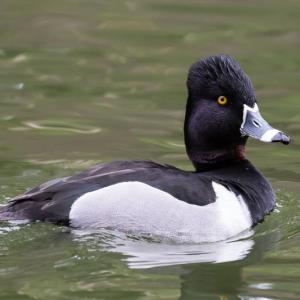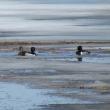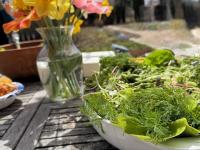Ring-necks in Winter in Maine
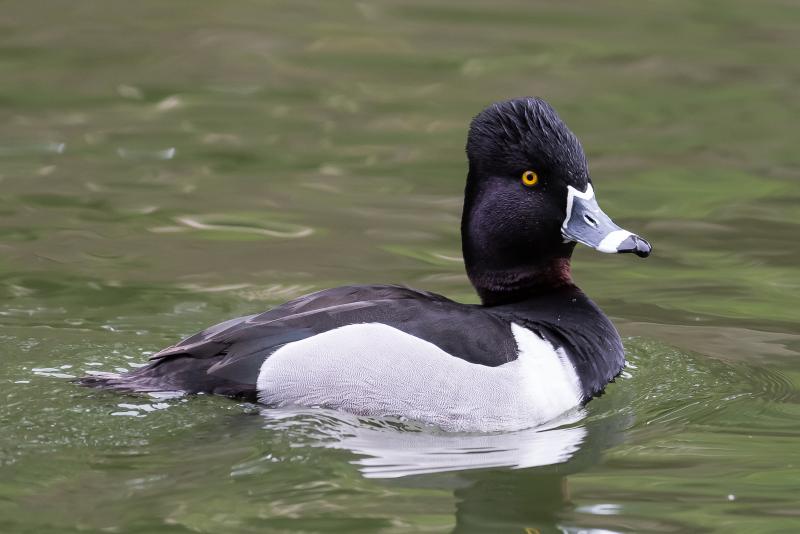 With their dark head, chest, and back, gray sides and white stripe around the bill, drake ring-necked ducks are striking and elegant birds. Photo by Becky Matsubara courtesy of Wikimedia Commons
With their dark head, chest, and back, gray sides and white stripe around the bill, drake ring-necked ducks are striking and elegant birds. Photo by Becky Matsubara courtesy of Wikimedia Commons
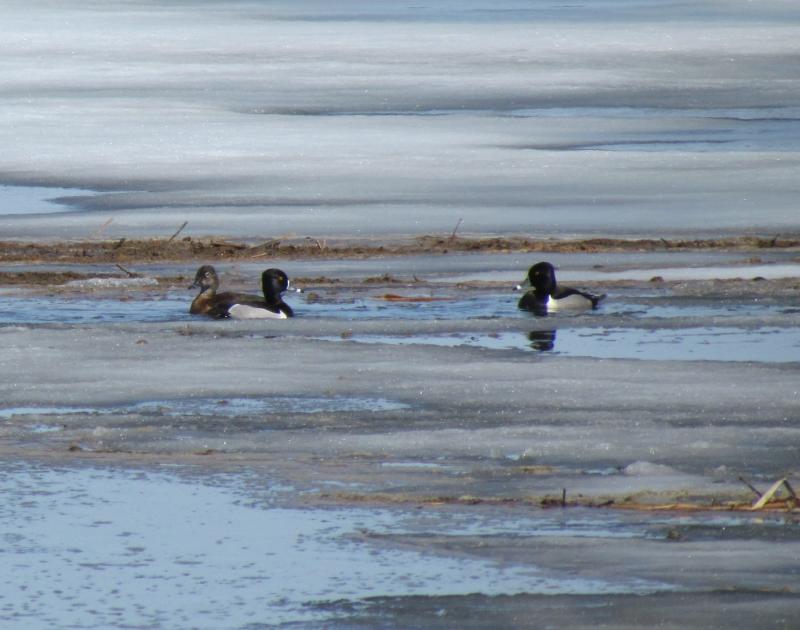 Ring-necked ducks normally begin arriving in Maine in March and April, showing up in open areas along the edges of lakes and ponds as these ones did on Cobbosseecontee Lake in Monmouth in April of 2017. Courtesy of Jeff Wells
Ring-necked ducks normally begin arriving in Maine in March and April, showing up in open areas along the edges of lakes and ponds as these ones did on Cobbosseecontee Lake in Monmouth in April of 2017. Courtesy of Jeff Wells
 With their dark head, chest, and back, gray sides and white stripe around the bill, drake ring-necked ducks are striking and elegant birds. Photo by Becky Matsubara courtesy of Wikimedia Commons
With their dark head, chest, and back, gray sides and white stripe around the bill, drake ring-necked ducks are striking and elegant birds. Photo by Becky Matsubara courtesy of Wikimedia Commons
 Ring-necked ducks normally begin arriving in Maine in March and April, showing up in open areas along the edges of lakes and ponds as these ones did on Cobbosseecontee Lake in Monmouth in April of 2017. Courtesy of Jeff Wells
Ring-necked ducks normally begin arriving in Maine in March and April, showing up in open areas along the edges of lakes and ponds as these ones did on Cobbosseecontee Lake in Monmouth in April of 2017. Courtesy of Jeff Wells
There have been lots of warnings in the news about the lack of ice on lakes and rivers in Maine this winter. Many traditionally frozen lakes and rivers have either frozen only for a short time or have had portions that have not frozen at all. The Kennebec River, which is usually frozen solidly enough to have smelt shacks on it in Randolph, just above the bridge in Gardiner, was almost completely open as of the late January this year.
Sadly, this is likely to happen more often as climate change alters our historical weather patterns.
In the open water of the Kennebec River in South Gardiner a few days ago, we were greatly surprised to come across a male ring-necked duck. That’s a bird that we normally would look for as a spring arrival in March. There have been a few that have wintered in a couple of spots along the coast including at Damariscotta Mills—that includes this year, but inland sites, in past years, would have been mostly frozen and inhospitable for them.
This year there have been a number of ring-necked duck sightings at inland locations in January. Along with our bird in South Gardiner, there have been individuals at Chickawaukie Pond in Rockland and Swan Lake in Swanville where there has also been a redhead and some lesser scaup.
Interestingly, while a few ring-necked ducks are hanging out in the cold winters here in Maine, small numbers also occasionally winter as far south as the islands of Aruba, Bonaire, and Curaçao just off the northern coast of South America. We have watched a few under the blazing hot sun as they swam about in little shallow freshwater pools shoulder-to-shoulder with white-cheeked pintails, a bird of the Caribbean and South and Central America.
Ring-necked ducks reach their highest winter abundance in the southeastern U.S. Christmas Bird Counts (CBC) in that region regularly have tallies in the thousands. Last year, the highest number of ring-necked ducks was on a CBC in Missouri that found over 9,000 individuals.
You may wonder why even a few of these ducks would push the limits to winter as far north as Maine, and why we might expect more and more to do so as climate change makes it easier for them to do so. Many birds like to be the first to arrive on their breeding grounds in the spring to gain access to the best locations and food sources and, for males, to increase their odds of mating with females as they return. In theory, males that winter farther north would have a shorter trip to reach the breeding grounds. They would likely also have less competition with others of their kind during the winter months. If the colder, harsher conditions encountered in wintering farther north are not enough to decrease their odds of survival, then it might just be a strategy that works, at least in some years.
This, of course, leaves us wondering if the drake ring-necked duck we saw in the Kennebec days ago has increased his odds or the weather will turn and he’ll wish he was down in the south!
Jeffrey V. Wells, Ph.D., is a Fellow of the Cornell Lab of Ornithology and Vice President of Boreal Conservation for National Audubon. Dr. Wells is one of the nation's leading bird experts and conservation biologists and author of the “Birder’s Conservation Handbook.” His grandfather, the late John Chase, was a columnist for the Boothbay Register for many years. Allison Childs Wells, formerly of the Cornell Lab of Ornithology, is a senior director at the Natural Resources Council of Maine, a nonprofit membership organization working statewide to protect the nature of Maine. Both are widely published natural history writers and are the authors of the popular books, “Maine’s Favorite Birds” (Tilbury House) and “Birds of Aruba, Bonaire, and Curaçao: A Site and Field Guide,” (Cornell University Press).

